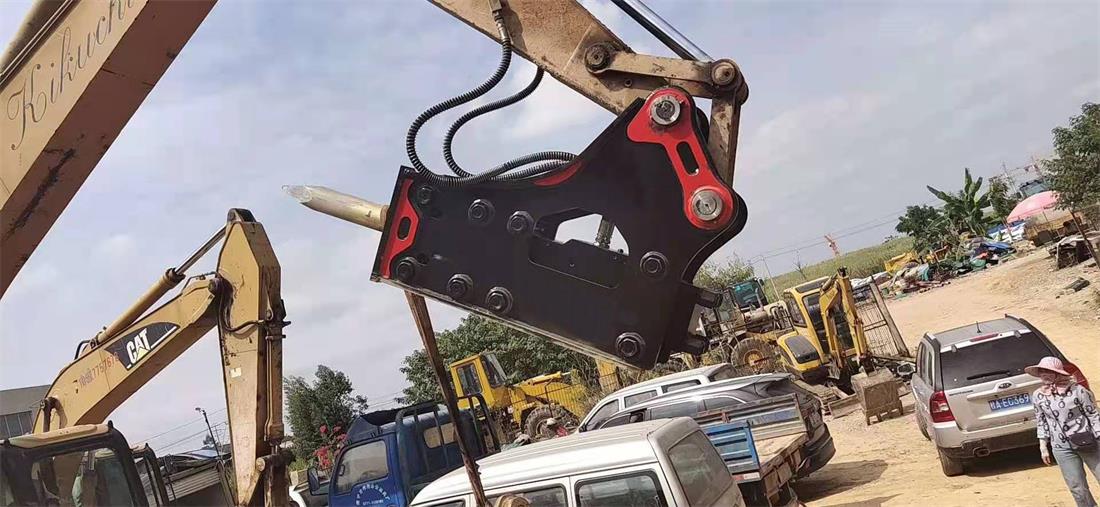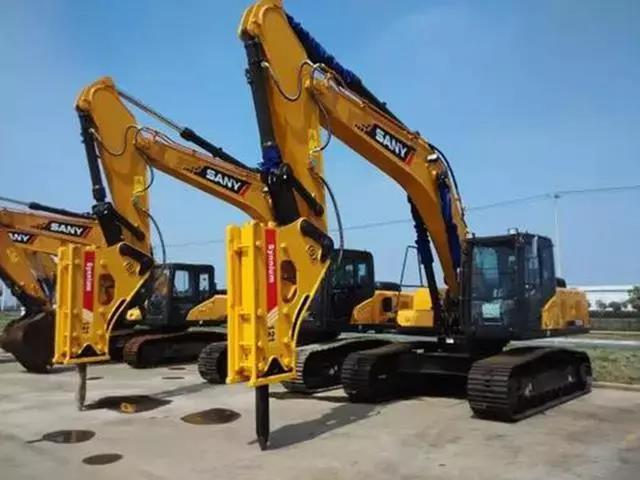 HuiTong
HuiTong  2025-06-13
2025-06-13
Excavator hydraulic rock breaker installation
Because most excavators are not equipped with pipeline accessories for hydraulic rock breaker when they leave the factory, they are only equipped with spare valves. Therefore, when these excavators are installed with hydraulic rock breaker, they must be equipped with pipelines and accessories. Figure 2 is a schematic diagram of the main components of the pipeline connection. Excessive oil return pressure will reduce the impact force of the hydraulic rock breaker. In order to minimize the refueling back pressure of the hydraulic rock breaker, the common return pipeline can be directly returned to the fuel tank through the oil filter (no longer via the spare valve). In order to facilitate the change of buckets and excavation operations, a shut-off valve should be installed in the pipeline close to the hydraulic rock breaker. When installing piping, prevent dirt from entering the system. Steel pipes and joints must be measured through a clean room, and hoses must not be twisted.
If the spare valve is not equipped with a control oil circuit. The pressure oil can be drawn from the oil supply pipeline of the pilot control system (after the safety lock valve) by adding a three-way instant head, and then the standby valve can be controlled by the solenoid valve. The solenoid valve should be controlled by a convenient switch.

Excavator hydraulic rock breaker use
01 correct operation
Correct operation can improve the working efficiency of the hydraulic hammer and extend the service life of the hydraulic pile hammer of the excavator. When working, pay particular attention to the following points.
(1) The hydraulic rock breaker drill rod is always perpendicular to the surface of the broken object, and the broken object is pressed tightly with the drill. Stop the hydraulic hammer immediately after breaking to prevent runaway.
(2) When breaking a particularly hard object, start beating from the edge first, and do not continuously hammer at the same point for one minute to prevent the drill rod from burning or the hydraulic oil from overheating.
(3) When the excavator is rotating, do not let the drill rod touch other objects.
(4) When working in water, the drill rod can only be immersed in water. If you really need to immerse all the hydraulic hammers in water, you should order a special hydraulic hammer for underwater operations from the manufacturer.

02Maintenance
As the working conditions of the hydraulic hammer are very bad, correct maintenance can reduce the occurrence of machine failures and prolong the service life of the machine. In addition to the routine maintenance of the excavator, the following points should also be noted.
(1) Visual inspection
Check the gap between the drill rod and its bushing, and check whether there is any hydraulic oil seeping between it. If there is oil leakage, it indicates that the low-pressure oil seepage seal has been damaged and should be replaced by professionals. Check whether the relevant bolts are loose, and whether the pin shaft at the connection is worn out.
(2) Lubrication
The lubrication point of the working device should be greased at least twice a day.
(3) Replace the filter element and hydraulic oil
When using a hydraulic rock breaker, the deterioration and contamination of the hydraulic oil is much faster than that of ordinary bucket operations. Under normal circumstances, the oil filter element and hydraulic oil in the hydraulic system should be replaced in half of the normal replacement cycle.